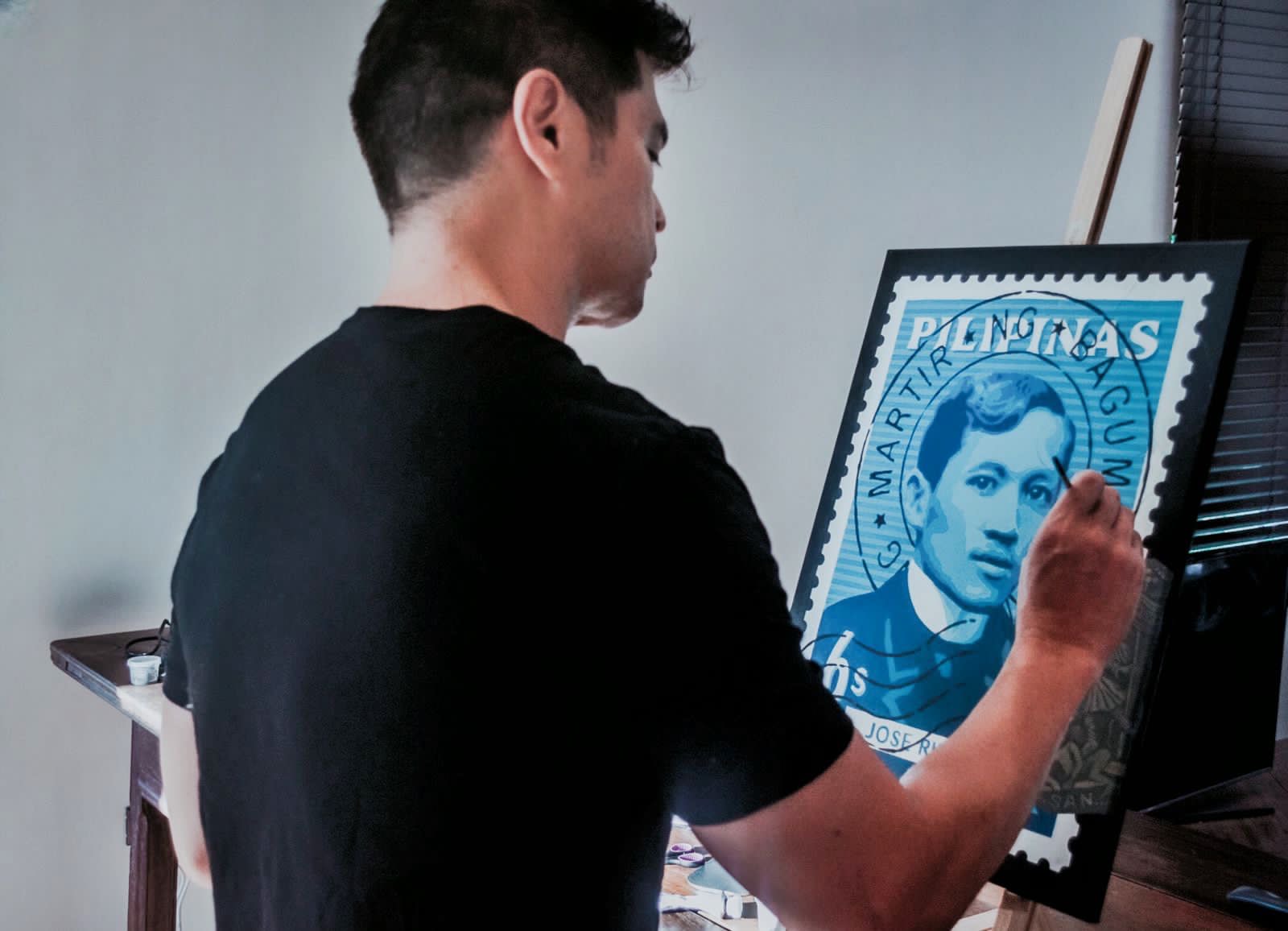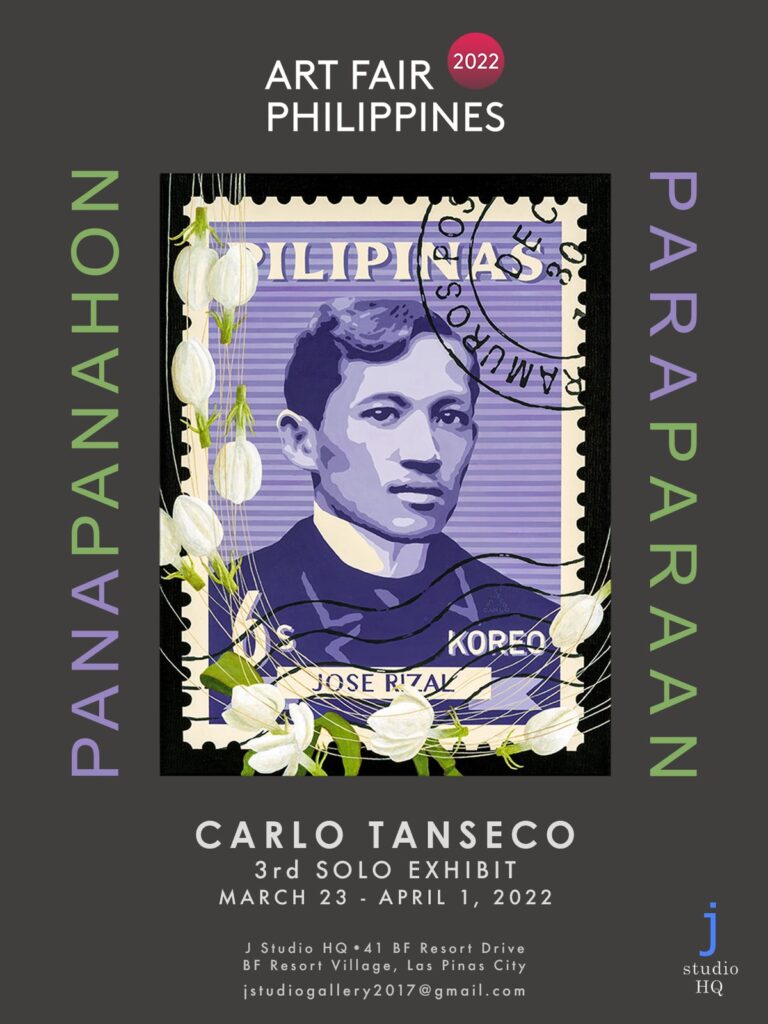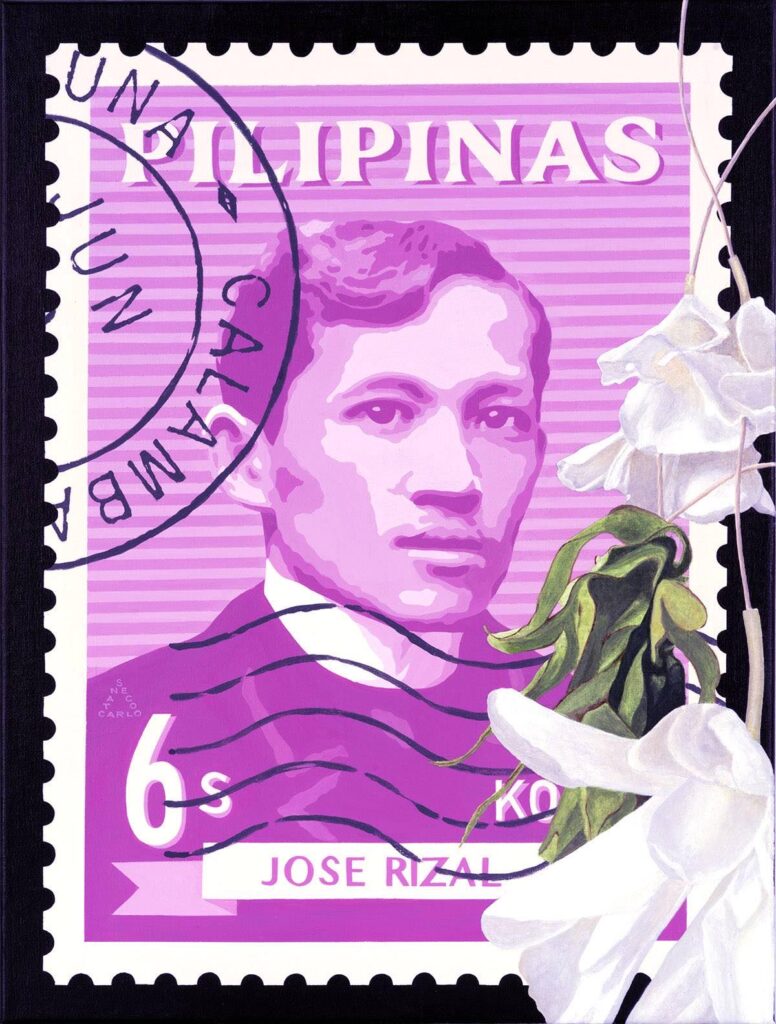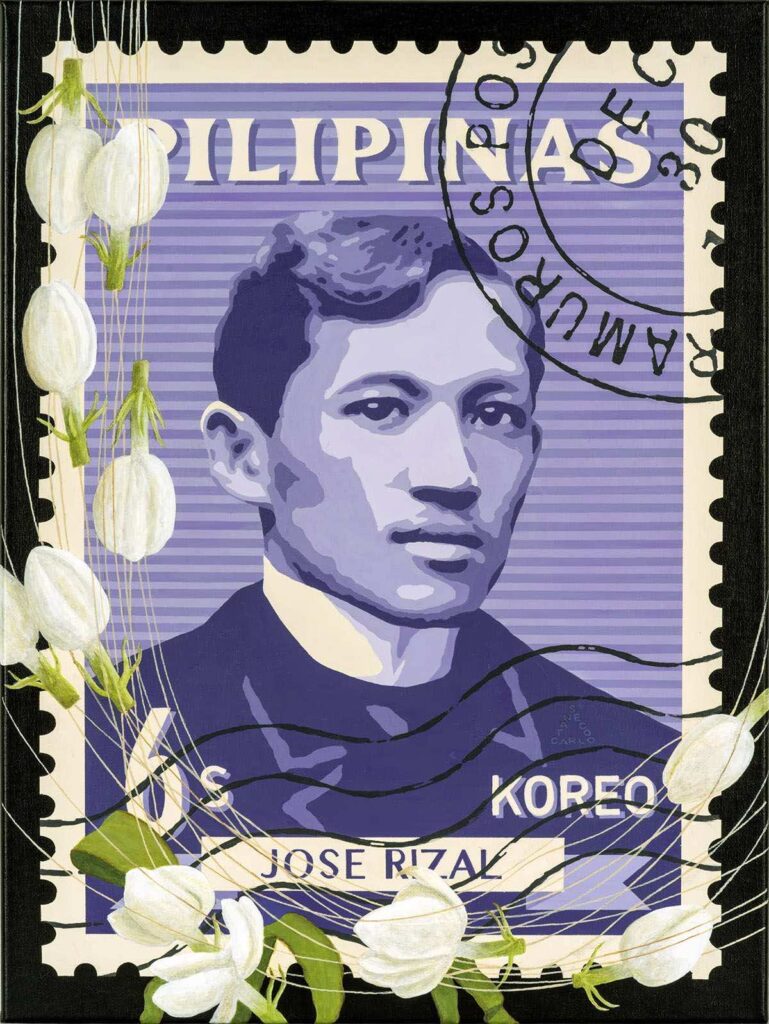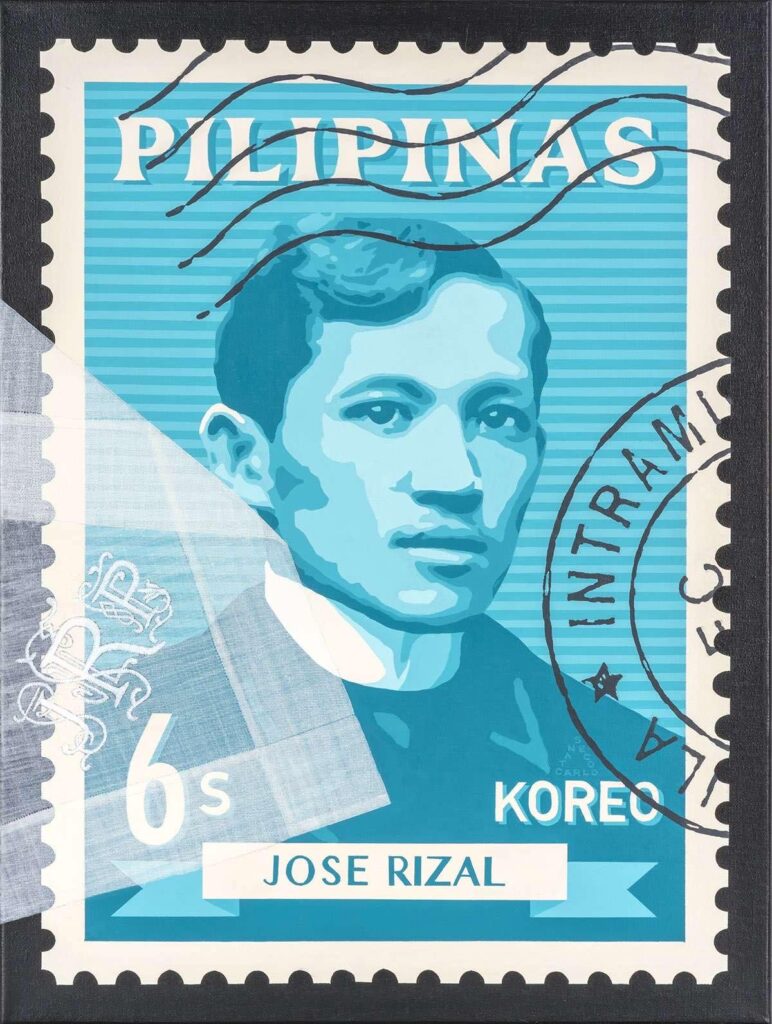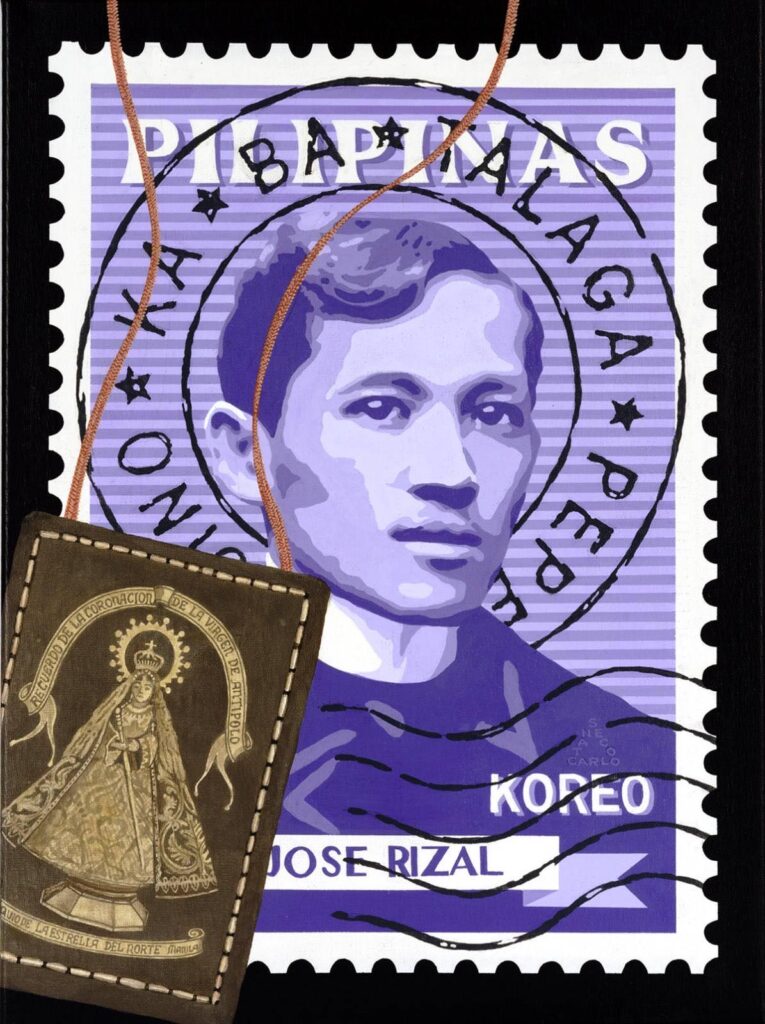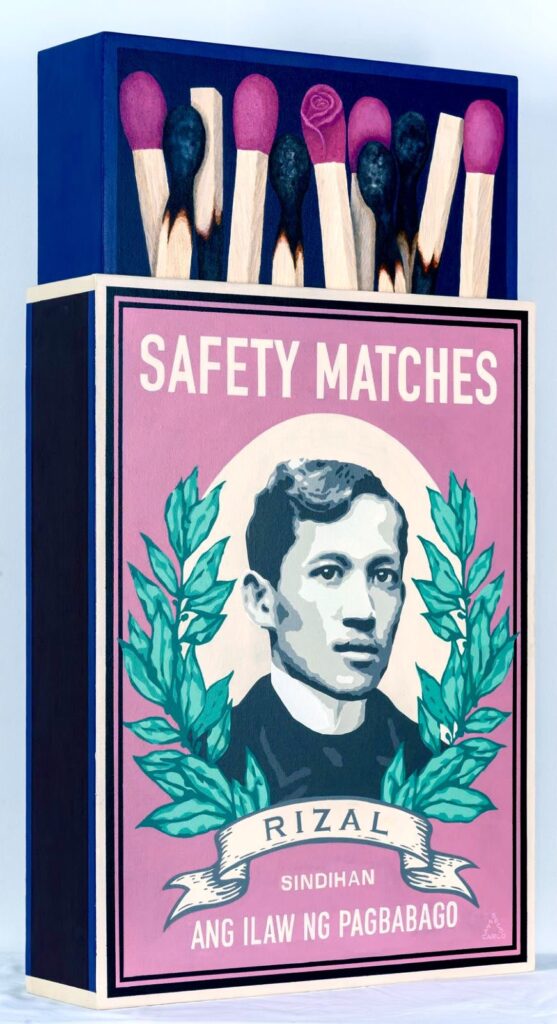The artist, whose works are currently exhibited at J Studio HQ in Las Piñas, joins this year’s Art Fair Philippines. Although his collection’s underlying theme may seem trivial, it tries to further explore the man’s patriotism and his dream for a better Philippines through everyday objects and symbols.
How have Filipinos’ views of someone so iconic and universal changed over the decades? Are his ideas and ideals still resonating with them today? Are they still relevant? Jose Rizal has been a constant subject in Carlo S. Tanseco’s paintings, not because of the hero’s mythologized identity, but because of how Rizal’s life and death still resonate with us as Filipinos.
Tanseco dealt with these mythologies of Rizal in his 2021 “Alias Elias.” This time, in his third exhibit “Panapanahon-Paraparaan,” composed of 13 artworks, including five each of the Stamp and Stampita paintings, plus a trio of “Matchbox” works—at J Studio HQ in Las Piñas as part of Art Fair Philippines 2022, the artist explores the subtle ways this hero was created.
“I was thinking, not just of Rizal, but of other heroes as well—aside from what they did for the country, what else made them heroes? Is it the right timing, is it the right circumstances?” Tanseco says. “We knew from history, that it was Rizal’s brother Paciano who was the more patriotic, and feistier, from most accounts.”
Although “Panapanahon-Paraparaan” deals with the “lighter” side of Rizal, visually focusing on the quiet moments of his life, including his childhood, his ilustrado wanderlust, his religious devotions and his artistic skills, it is important to note that all these seemingly trivial memories have symbolic ties to Rizal’s patriotism and his dream of a better Philippines.
As in the previous “Alias Elias” exhibit, Tanseco’s Stamp and Stampita paintings are symbolic of a time that has passed, and its messages of lessons learned. Flowers draped against Rizal’s visage allude to various periods of his life: blue forget-me-nots and a pfennig are reminiscent of his time in Germany, wherein he completed Noli me Tangere; the kamia and ilang-ilang garlands representative of his criticism of the Catholic Church; and lastly, sampaguita blooms as the National Flower mirroring his martyrdom as our National Hero.
The key messages in this show lie in Tanseco’s Matchbox paintings, as explained by Tanseco. “Burnt matches symbolize that you can only have one chance with matches; once it is extinguished, that’s it. The unused matches here signify our chances in life—we all have a chance to have another go at doing what we do.”
“The matches also allude to Rizal; he burned brightly, but he was put out at once. He did make good use of every moment of his life, even if it was a short one,” Tanseco adds.
“Panapanahon-Paraparaan” also communicates with us at this point in history, with the impending elections. Have special circumstances merely thrown key players into candidacy? Are we just settling with our choices? This exhibit’s message can also pose a challenge that perhaps we could be compelled to make little sacrifices and create solutions that will benefit not only ourselves, but the rest of the nation.

